Herp habitat - a mostly dried up swamp. In what has been a brutally dry summer in the area this year, small waterways provide a lifeline for a number of creatures.
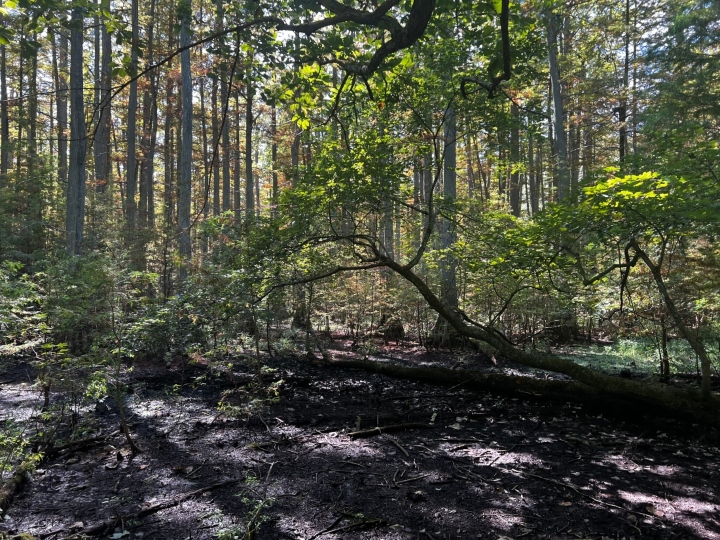
The Central Newt’s habitat is woodland ponds, swamps and occasionally water-filled ditches.
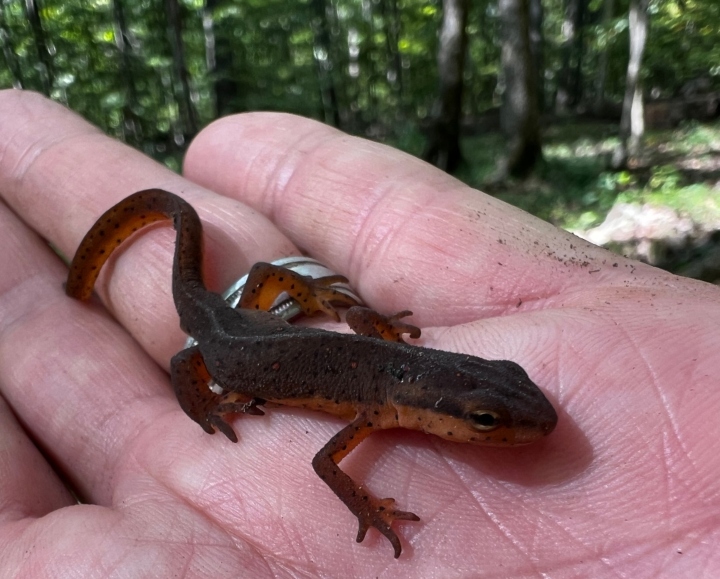
The most commonly encountered amphibians were Southern Leopard Frogs.
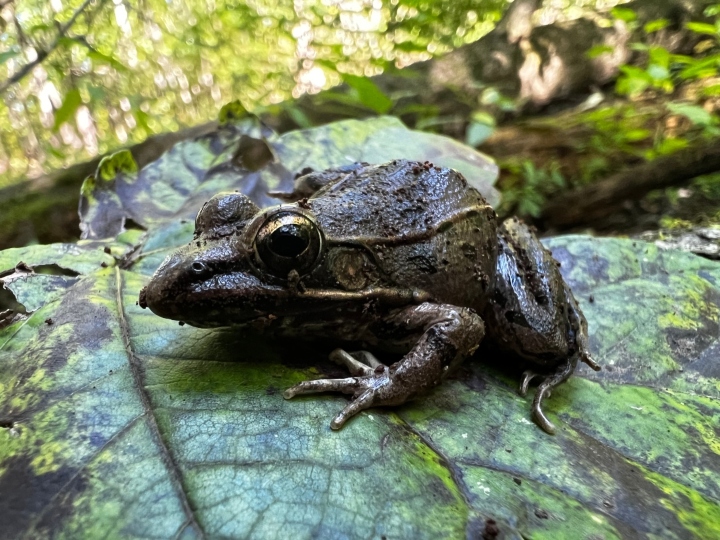
Unlike most mole salamanders, instead of laying eggs in the spring, Marbled Salamanders lay their eggs in the Fall in low areas that are likely to flood during Winter rains. The female coils around her eggs until they can be underwater.
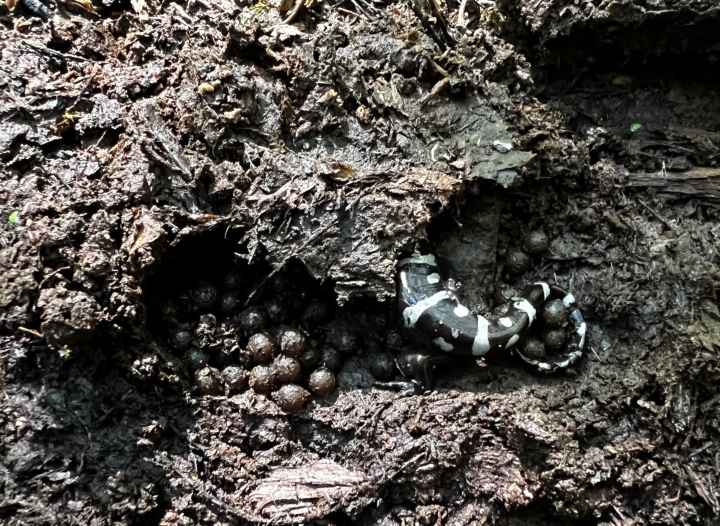
Copperbelly Water Snakes are not constrictors; they simply overpower their food. This species has a preference for frogs, toads, tadpoles and salamanders – but it also eats fish and crayfish.
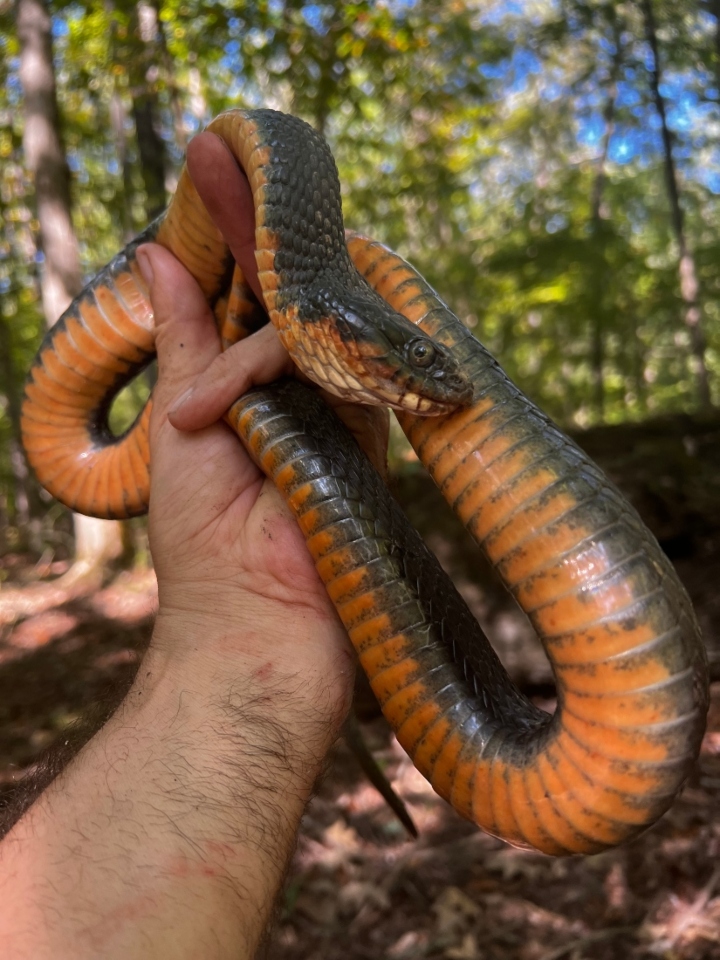
Gilled Polypore was one of the many types of mushrooms seen on the trip.
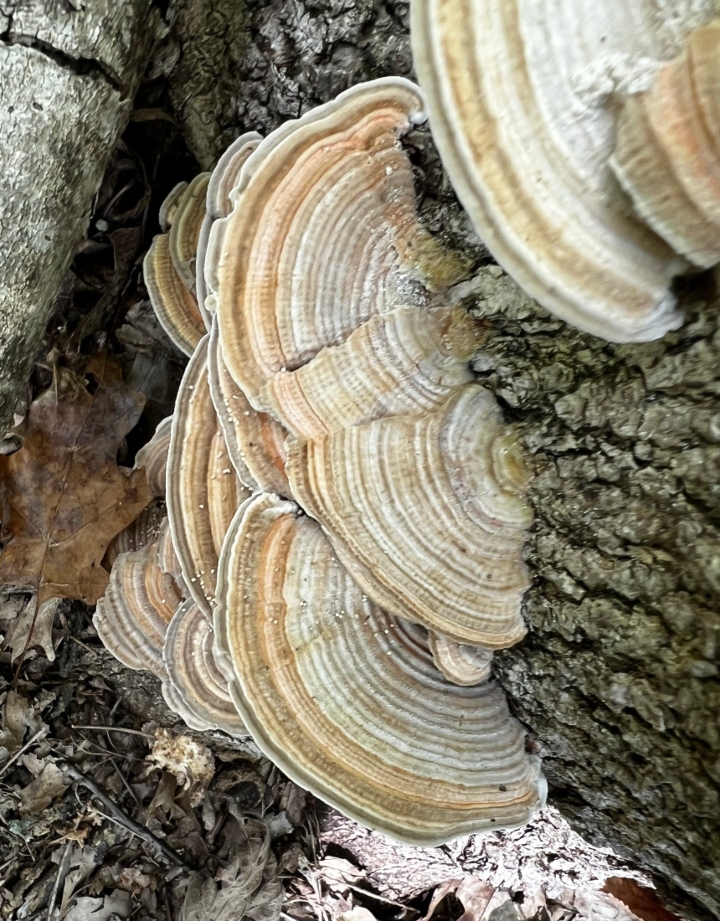
Mole Salamander - this 3 to 4 inch stout-bodied salamander has with a large, flattened head and spends most of its life underground.

Herp habitat - the Cache River.
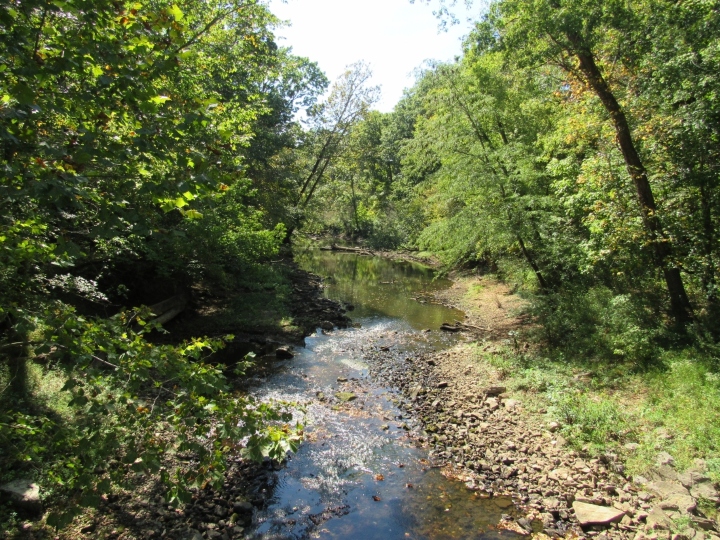
A baby Spinkpot (also known as the Common Musk Turtle). This is one of the world's smallest species of turtle.
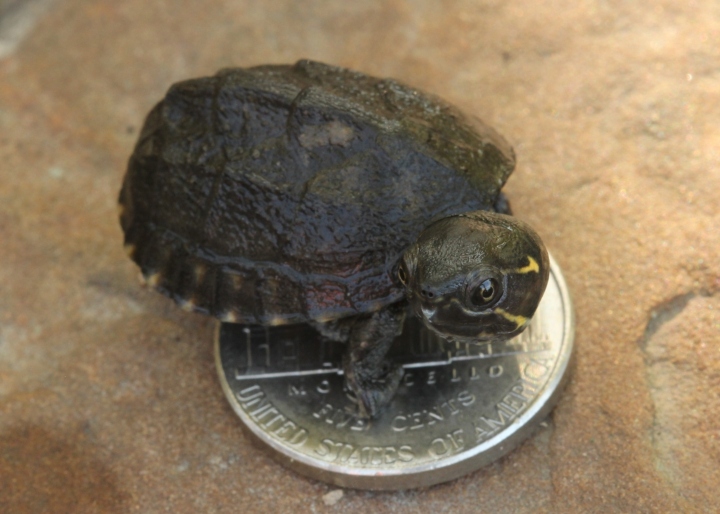
Western Ribbon Snake - this reptile is semiaquatic and most commonly associated with brushy or grassy areas close to water. It may be found near swamps, marshes, ponds, rivers, streams, lakes and damp meadows.
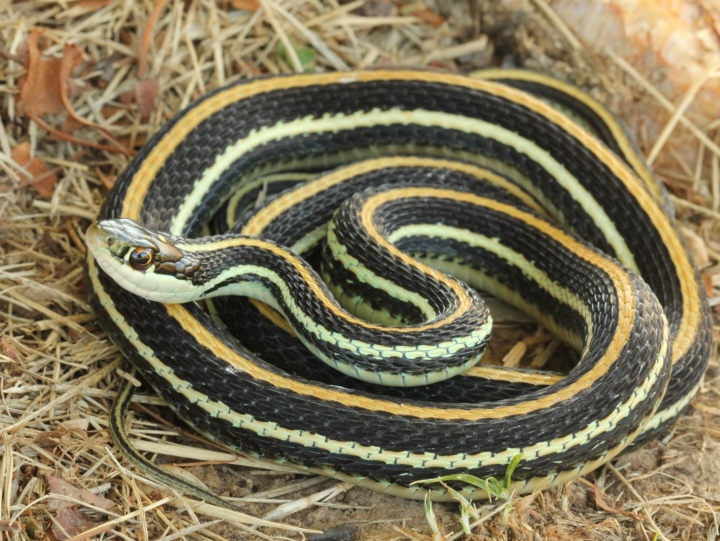
A Midland Painted Turtle basking near the Cache River. True to their common name, these turtles usually have red or orange markings along the edge of their shell. They also have yellow and red stripes on their neck and legs.
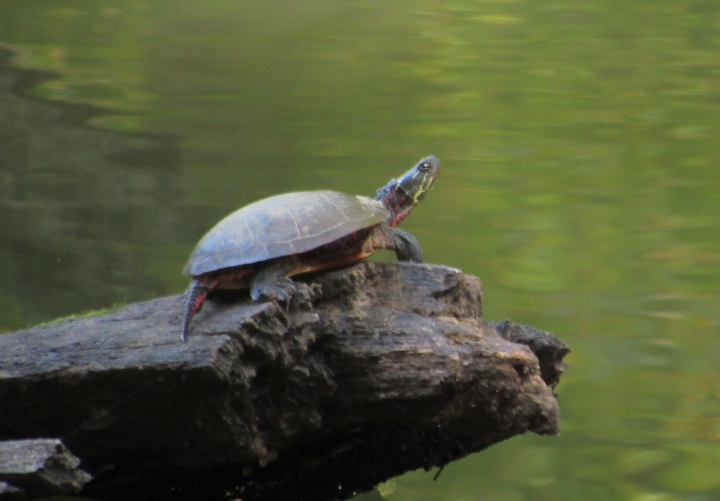
Despite their size and being undeniably cute in appearance, Common Musk Turtles have cantankerous dispositions.
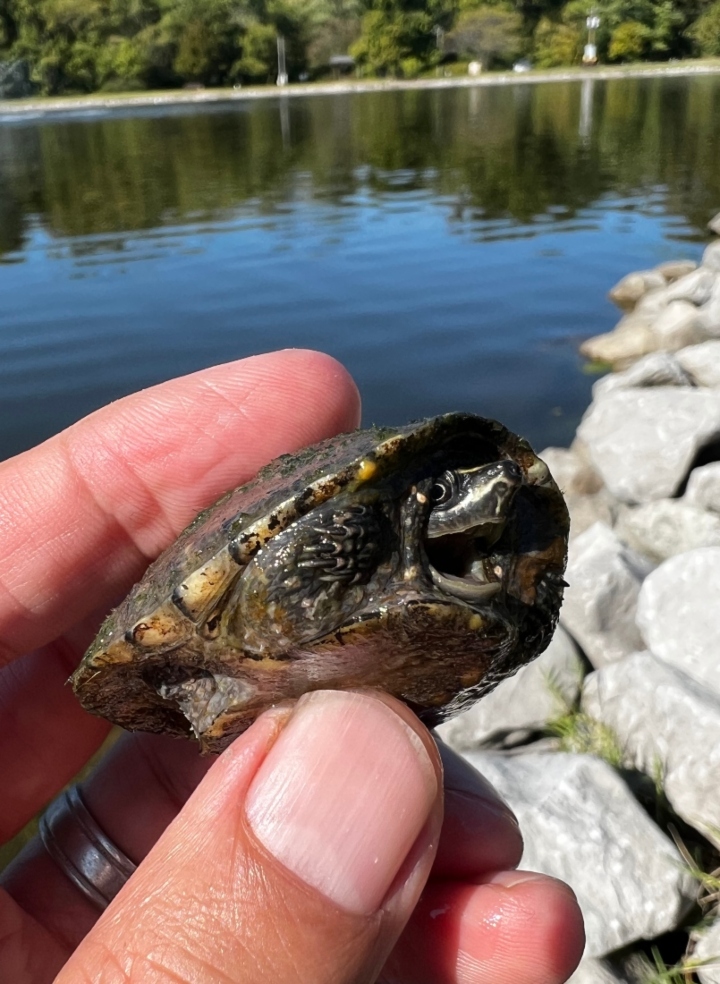
The Red Admiral has a very erratic, rapid flight. The males are territorial and often can be found in the same location day to day. Adult butterflies prefer sap flowing from trees or fermenting fruit over nectar from flowers.
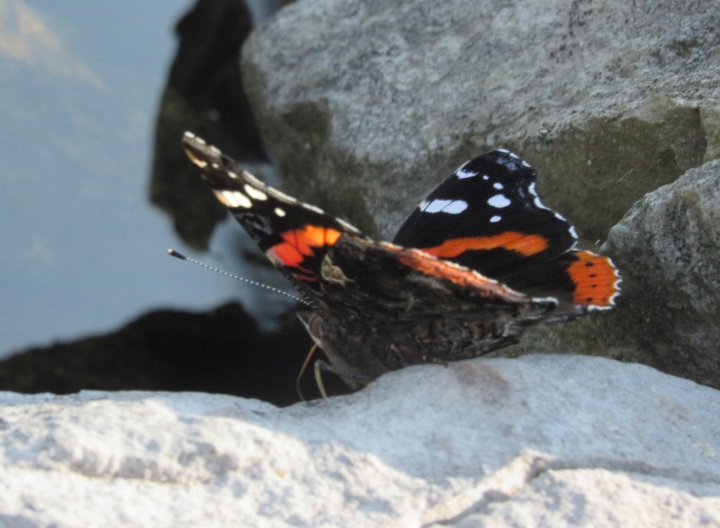
Eastern Spiny Softshell Turtle - as thier name implies, their shells are soft and pliable. They almost look like a pancake.
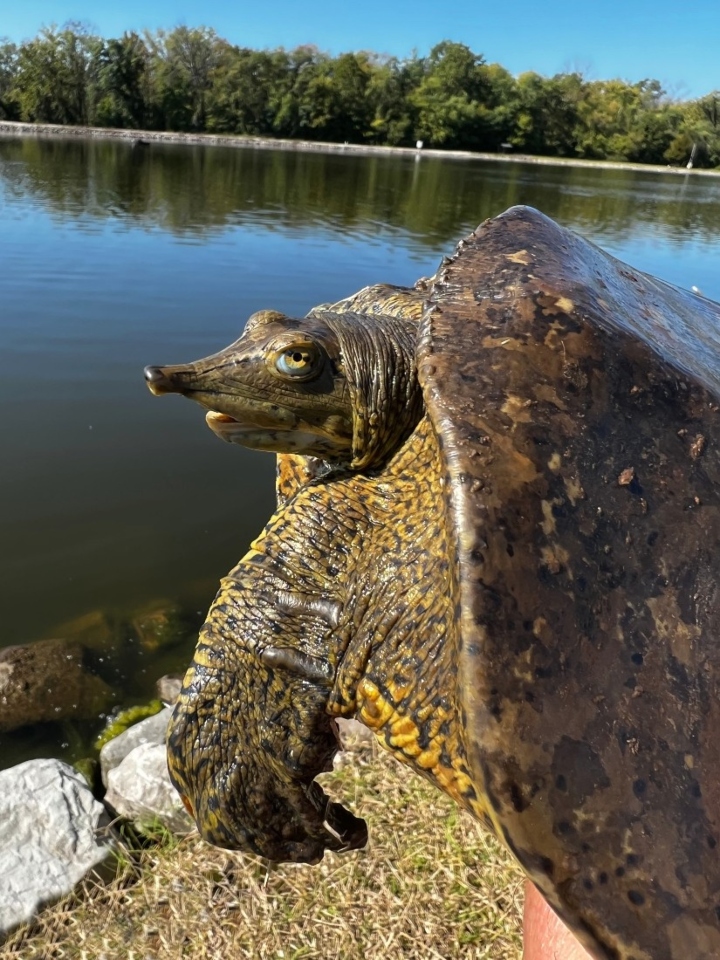
The Midland Water Snake can be found in and around lakes, ponds, creeks, rivers, and even in drainage ditches. It prefers areas with wood debris, rocks or other hiding spots. It adapts well to humans and sometimes even resides in decorative ponds at apartment buildings.
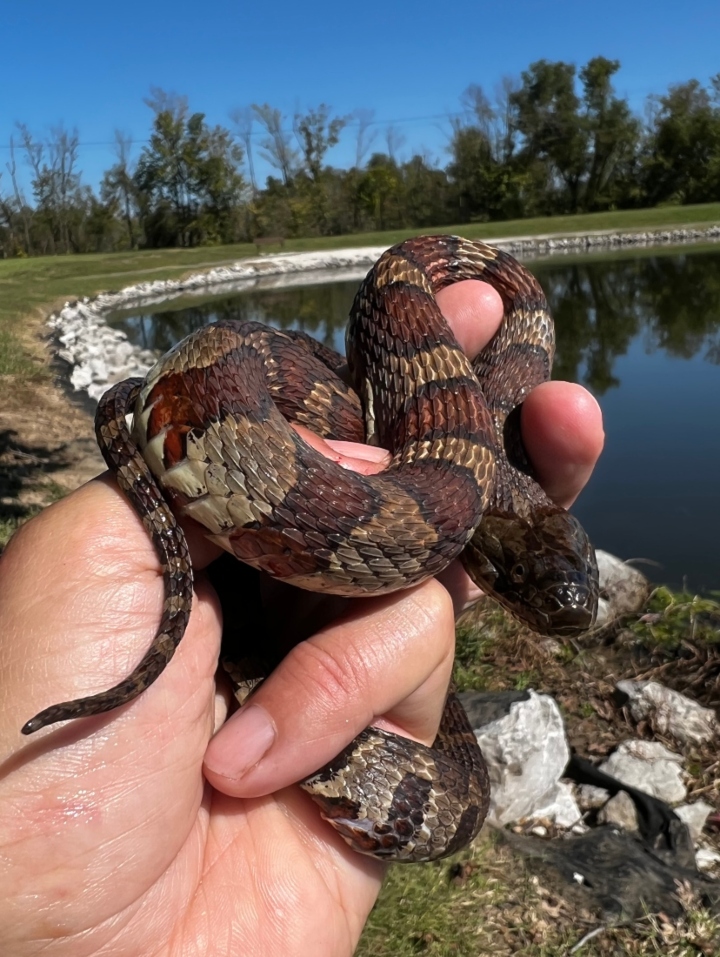
Herp habitat.
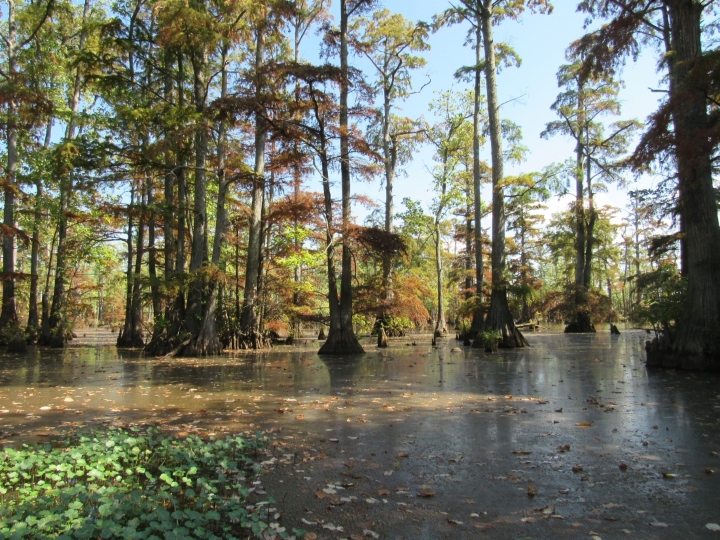
Red-eared Sliders were the most commonly seen turtles. Here a melanistic example is basking with a normal-colored one.
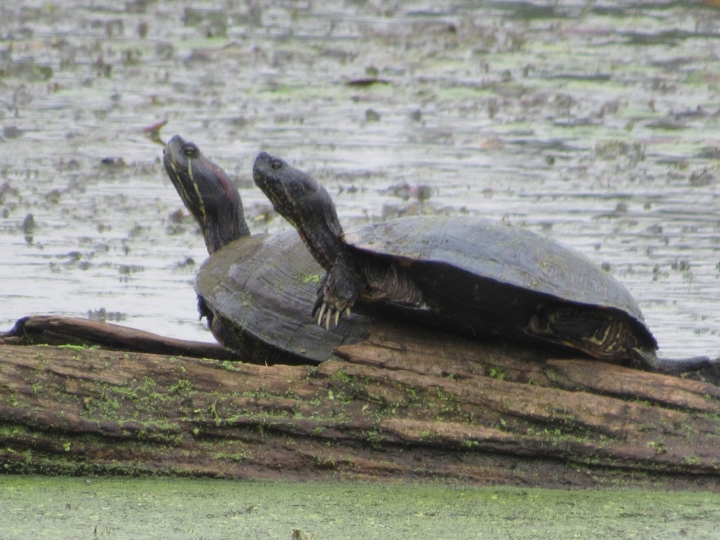
A "lifer" Southern Painted Turtle in Missouri.
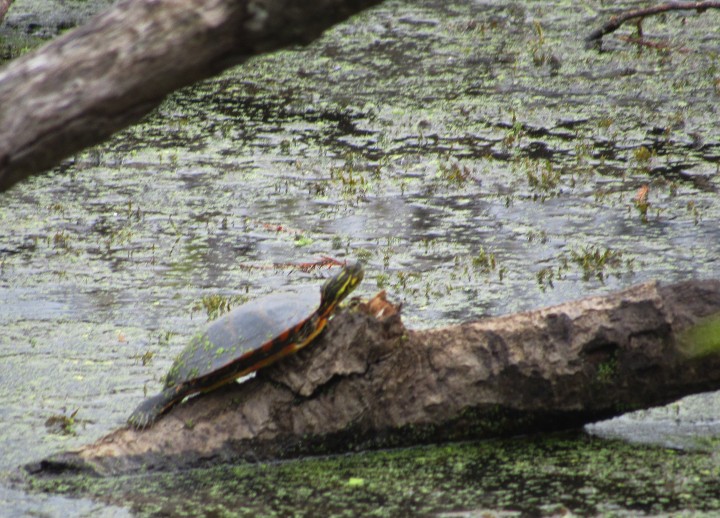
Stinkpot - this species is a weak swimmer that is often seen crawling on mud in quiet, shallow water; it is easy to mistake them for stones.
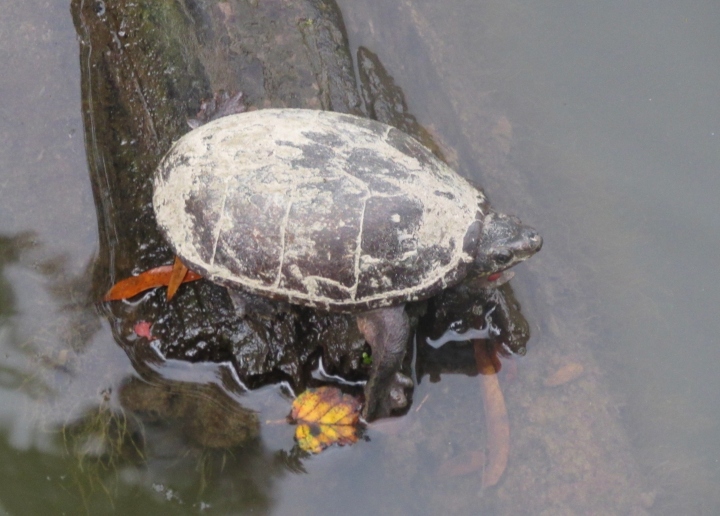
The Red-eared Slider’s most distinguishing characteristic is the bright, red-orange patch behind each eye. The “slider” part of their name comes from their ability to slide off rocks and logs and into the water quickly.
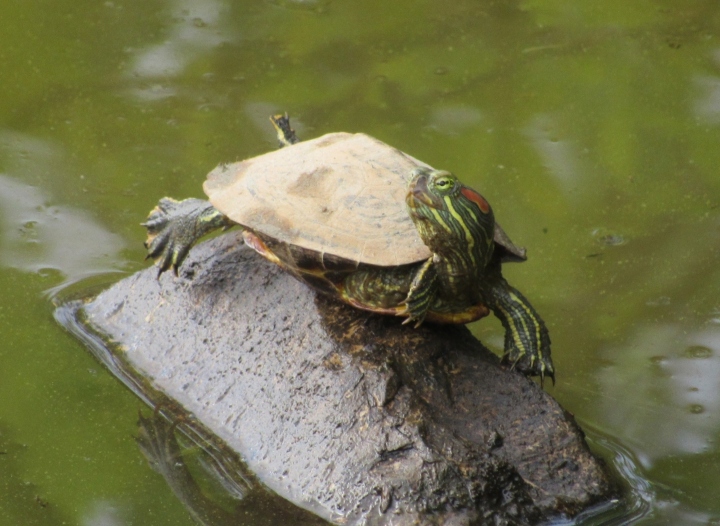
An Eastern Yellowbelly Racer that I found in Jefferson County, Missouri.
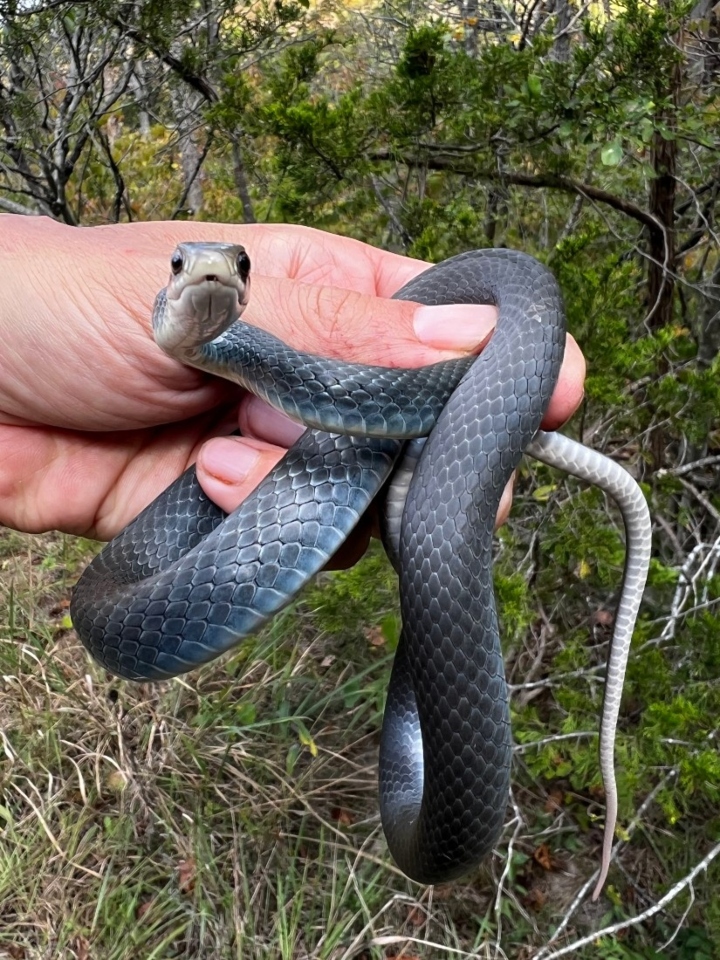
Click here to see Part 3
|